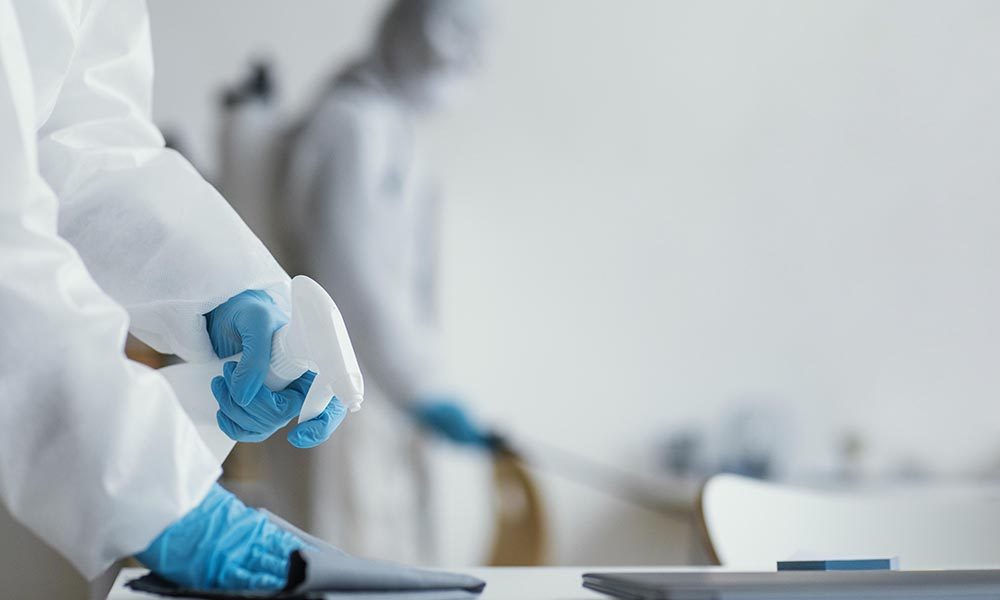How clean is the air in your healthcare facility?
When we think of hospital cleaning, we often focus on disinfecting surfaces, wiping down beds, and sanitising high-touch points.
But what about what we can’t see, like airborne pathogens? These invisible threats float undetected through corridors and patient rooms, capable of spreading infections at alarming rates.
Post-pandemic healthcare demands a heightened focus on air hygiene.
Fortunately, with strategic investment in air disinfection technologies and proper hospital protocols, you can reduce this risk significantly.
Let’s explore why airborne pathogen control is no longer optional; it’s essential.
The Importance of Airborne Infection Control in Healthcare Facilities
Hospitals are home to immunocompromised patients, making them especially vulnerable to infection. Contaminated air isn’t just a health hazard. It directly affects patient outcomes and recovery timelines.
A robust airborne infection control system forms the backbone of safer, cleaner hospitals.
Understanding the Role of Airborne Transmission in HAIs
Airborne transmission plays a significant role in Hospital-Acquired Infections (HAIs), allowing pathogens to linger in the air and spread silently across patient care areas.
Impact of COVID-19 on Airborne Infection Awareness
COVID-19 taught us that airborne transmission is a potent threat. This sparked a global shift in cleaning protocols, pushing air quality to the top of the agenda in healthcare facilities.
Best Practices for Airborne Infection Control
Some proven methods include:
- HEPA filtration systems
- UV-C light disinfection
- Negative pressure isolation rooms
- Routine air audits and HVAC maintenance
- Regular dust and particulate removal
These practices work hand-in-hand to eliminate airborne pathogens and improve overall hospital safety.
Importance of Ventilation and Filtration
Without proper airflow, infectious particles can recirculate, increasing the spread. Systems like negative pressure rooms and HEPA filters can trap harmful microorganisms before they reach vulnerable patients.
Technologies That Combat Airborne Infections
Advanced UV-C light technology works by breaking down microbial DNA, effectively neutralising airborne viruses and bacteria. When combined with HEPA filtration, you get a two-tiered system that captures and destroys up to 99.9995% of contaminants.
The S-400®: A Breakthrough in Medical-Grade Air Disinfection
- 3-stage UV-C light disinfection
- HEPA filter with carbon layers
- Removes VOCs, mould, bacteria, and viruses
- 400 cubic feet per minute (CFM) coverage
- Quiet, portable, and ozone-free
This hospital-grade air purifier has been tested in EPA guideline bio-aerosol chambers and used in institutions like NYU Medical Center and the University of Rochester.
Why Airborne Infection Control Must Be a Top Priority
Infection control isn’t just about compliance, it’s about saving lives. Here’s why controlling airborne pathogens matters:
- Reduces the risk of HAIs
- Promotes faster recovery
- Enhances patient and staff safety
- Prepares for future outbreaks like MERS, SARS, and Ebola
- Supports hospital accreditation and compliance
How Maintenance Teams and Medical Staff Collaborate
An effective hospital cleaning strategy involves seamless collaboration between building maintenance teams and clinical personnel.
Maintenance staff handle the technical aspects, like ensuring HVAC functionality and deploying disinfection units, while medical professionals ensure that patient protocols are followed.
Airborne Pathogen Control Impact
| Control Method | Effect on Hospital Safety |
| HEPA Filtration | Traps airborne bacteria and viruses |
| UV-C Disinfection | Neutralises the DNA of microbes, rendering them inactive |
| Negative Pressure Isolation | Prevents cross-contamination in critical care areas |
| Routine Cleaning Protocols | Eliminates dust and airborne particulates |
| Staff PPE Training | Reduces direct and indirect exposure |
A Safer Future Starts with Cleaner Air
To sum up, hospital safety is no longer just about sterile tools and hand hygiene.
Airborne transmission is a leading cause of hospital-acquired infections, and addressing it with the right tools, like the S-400® and UV-C disinfection, can significantly improve patient outcomes.
If you’re ready to bring advanced hospital cleaning standards to your healthcare facility, our team is here to help.
👉 Reach out today for a tailored infection control consultation.
Frequently Asked Questions (FAQs)
Q1: Why is airborne infection control important in healthcare settings?
Because viruses and bacteria can remain suspended in the air for hours, posing serious risks in confined, poorly ventilated environments.
Q2: What technologies are used for air disinfection in hospitals?
HEPA filters, UV-C light systems, medicated filters, and negative pressure rooms are the gold standard.
Q3: What are the best practices for preventing airborne infections in hospitals?
Routine HVAC maintenance, isolation protocols, proper PPE usage, and regular staff training are critical.
Q4: How does ventilation contribute to pathogen control?
Proper ventilation removes airborne contaminants and dilutes their concentration, reducing exposure and infection risk.
Q5: What’s the role of the S-400® in infection control?
It offers hospital-grade disinfection using UV-C and HEPA to remove nearly all airborne pathogens quickly and safely.


 1300 194 658
1300 194 658 info@perthexpresscleaning.com.au
info@perthexpresscleaning.com.au